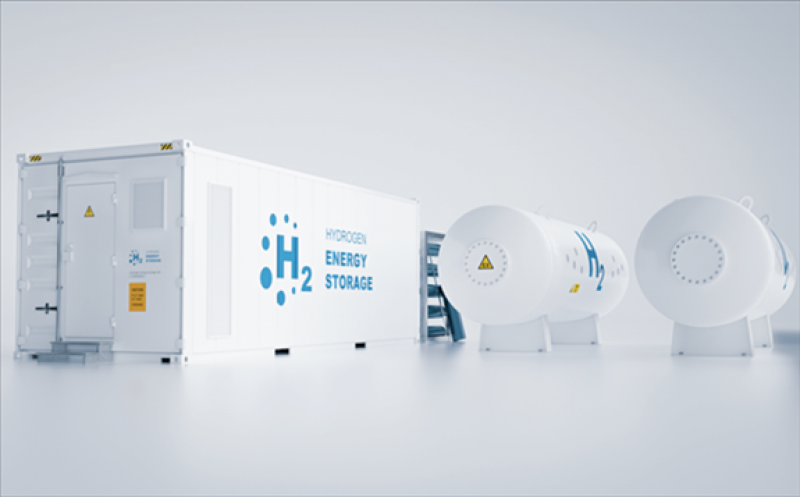Aggreko, together with its partner CMB.TECH, successfully tested a hydrogen combustion genset demonstrator in July, paving the way for further expansion. The company stated it will invest in 10 additional units to support hydrogen readiness, working with lead customers and partners to further test and validate hydrogen as an energy carrier for temporary power.

This is part of a wider movement by Aggreko to transition to low carbon technologies, and hydrogen has been highlighted as a clean fuel source that is gaining traction in a range of different industries.
“I think the fundamental thing about hydrogen is that there’s lots of different pathways for the production of it,” Carsten Reincke-Collon, Director of Future Technologies at Aggreko, told H2 View.
“In the long-term, green hydrogen, made from renewables, could be an option for us to help our customers with some low carbon solutions.”
Hydrogen is known for having multiple uses when it comes to being an energy vector. It can power our cars, homes and businesses, and can even help to grow renewable food.
For Reincke-Collon, he sees hydrogen being a key aspect of energy storage – hydrogen could be used as off grid energy providing renewable, off site hydrogen power through generators. It also means that hydrogen could be used as a complement to both solar and wind power. With the intermittency of these renewable energy technologies, hydrogen could be used to ensure there is sufficient low carbon power supplied to the grid to maintain the energy demand.
In fact, Reincke-Collon told H2 View that he sees hydrogen as a great carrier for alternative fuels and energy: “Instead of conventional hydrogen, which was made from natural gas that helps to decarbonise, you can also make solar power fuel, as you probably know, through hydrocarbon fuels like methanol or ammonia.
“These can be made from green hydrogen; it is really a starting point for many of the critical energy pathways for decarbonising the way we operate our industrial steelmaking for example.”
Ammonia can be used as both a low carbon shipping fuel and as a means to transport hydrogen to different locations. For this reason, ammonia has significant potential in the renewable energy market.
Hydrogen itself is key to net zero targets set out by the European Union and many countries around the world. Reincke-Collon thinks hydrogen could be a significant energy vector and told H2 View, “It has been identified as a key ingredient to achieve net zero targets. I think there’s still a long way to go because, obviously, it needs massive investments in terms of infrastructure.”
Challenges
These echo the thoughts of many within the hydrogen industry – investment in hydrogen infrastructure is required to accelerate global adoption. Without the required foundation, hydrogen prices will still be considered too high to be a viable economical option for industries considering investing in the renewable energy source.
Despite ambitious goals for hydrogen, there are still barriers hindering its progress and restricting its adoption. Much like the need for investment, Reincke-Collon told H2 View, “One of the greatest challenges that we have with hydrogen as a fuel is the way to store it compared to its conventional hydrocarbon.
“This is because it has a very high energy density rate, but a very low energy density by volume, even in it’s compressed or liquid form. It’s also quite expensive to make, store and move around today. It’s currently not really available as a green hydrogen.”
As revealed here, the main barrier preventing wider hydrogen adoption, and in that regard appeal, is the economic challenges associated with green hydrogen production, storage and transportation. Although great strides have been achieved in recent years to reduce the price of green hydrogen, there is still some way to go.
Despite these challenges to overcome, Reincke-Collon revealed some potential solutions to H2 View, “What we can do is figure out how practical its usage is in different sectors and applications. Then we can start investing in it and work with partners in other areas, like production of hydrogen technology to store and transport it and see what can be done to improve that.”
So hydrogen has great potential, however it needs support to overcome these challenges. When prompted on what needs to happen next for greater worldwide hydrogen adoption, Reincke-Collon said “there needs to be a conversation between different industries and sectors”, suggesting that cooperation is crucial in developing hydrogen around the world.
“Can we work together? Can we get the technology into the power generation space?” Reincke-Collon questioned. “This kind of thinking is very important to progress hydrogen. We need to form partnerships – large-scale industry partnerships to tackle the challenges.”